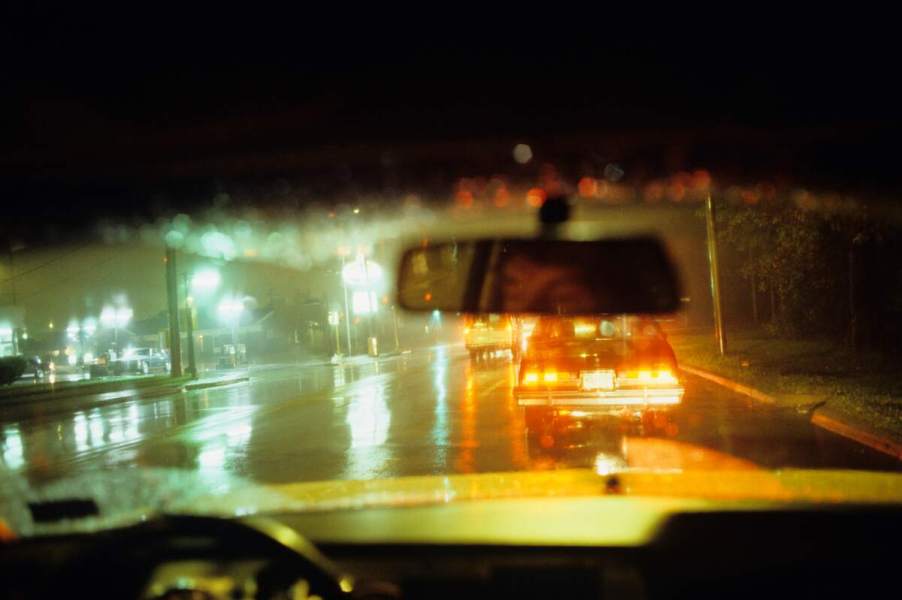
How Much Slower Should You Drive in the Rain?
Most motorists know that driving fast in inclement weather is never a good idea. Rain is particularly hazardous due to decreased visibility and slippery road conditions. So, how much slower should you drive in the rain?
Here’s how slowly you should drive in the rain
Cut your driving speed by roughly a third when driving in the rain. For instance, if the speed limit is 30 mph, slow down to 20 mph. In areas where you usually drive 40 mph, cut your speed to about 27 mph. And instead of driving 70 mph on the expressway, go about 47 mph.
Lowering your car’s speed by about a third gives you enough time to correct your steering if your vehicle begins hydroplaning on a particularly slick stretch of road. It also gives you extra braking distance so you don’t experience a collision.
Noting your vehicle’s speed also encourages you to be more aware of your surroundings, FMCSA explains. Remaining vigilant about other cars reduces the likelihood of braking too quickly. If that happens, you might lose control and hit the vehicle you intended to avoid.
Rainfall is only part of why you need to drive slower in this weather situation. Rainwater mixes with automotive oil that has dripped onto the pavement, making roads even slicker and more dangerous. In fact, AAA reports that 1.2 million crashes per year are due to wet pavement.
Other ways to stay safe while driving in the rain
If you can wait until the rain slows down, do it. Even if you follow the speed recommendations and drive safely, you could still have an accident. Similarly, there’s no shame in pulling over if the rain becomes too severe. If you can’t clearly see the road in front of you, stop your car as soon as it’s safe to do so.
Before you head out, ensure your tires are at the optimum pressure, as stated in your owner’s manual. Use the penny test to determine if your tires are at the correct tread depth. If the tread is too worn, your vehicle won’t have the best traction on slippery roads.
In addition to reducing your speed in wet conditions, increase your following distance from other vehicles. Stay at least six car lengths away instead of the recommended three. Also, stay aligned with the cars ahead of you while driving because doing so will reduce your risk of hydroplaning.
Furthermore, drive in the middle lanes to avoid large puddles accumulating in the outer lanes.
Also, give extra following distance to large commercial vehicles like buses and trucks. Because of their added weight, they can’t brake as quickly as passenger cars and have a higher chance of tipping over when hydroplaning.
Avoid using this driver-assistance feature until the weather clears up
AAA advises avoiding cruise control in rainy conditions. If your car loses traction on a wet road, cruise control might register this action as a loss of speed. It could accelerate suddenly to compensate, causing you to lose control of your vehicle.
Stick with basic car safety features like headlights, defrosters, and windshield wipers to get you through the storm. If your wiper blades leave streaks across your windshield, replace them immediately. You can increase your visibility further with a windshield water repellent. Also, ensure your car’s turn signals and brake lights are functional.
Although driving in the rain is always potentially unsafe, there’s no reason to fear it. With a plan and precautions, you can stay calm and reach your destination unharmed.


